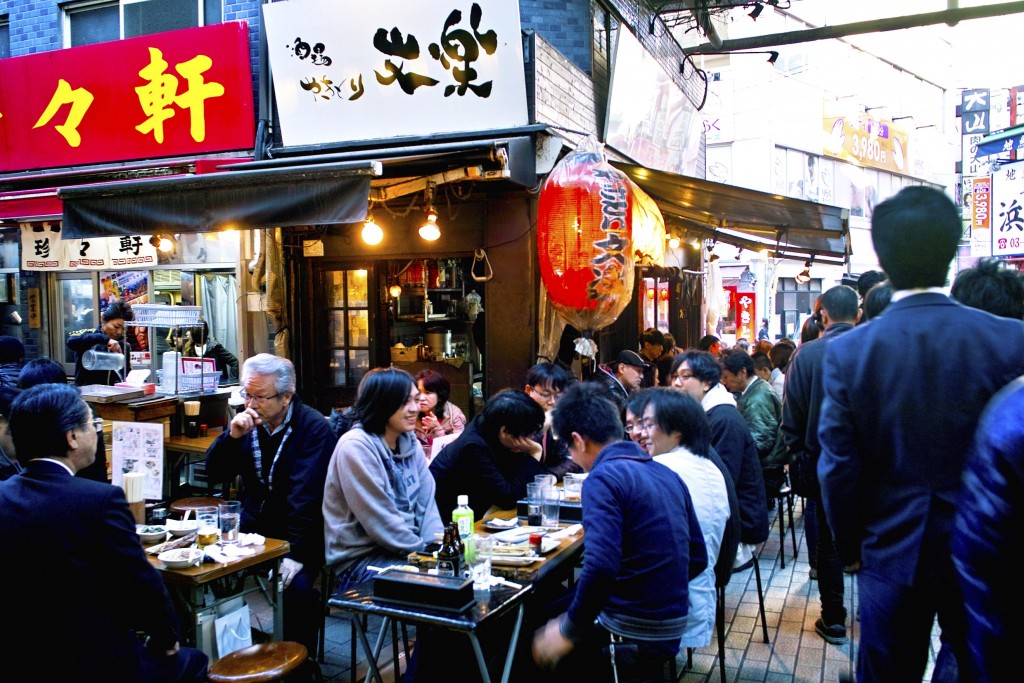Ueno
Parks, museums, pandas and drinking in the daytime.
Forget Stacey’s mom, Ueno has got it going on. Like cherry blossoms and temple ruins? Head on down to Ueno Park. Can’t get enough of baby panda videos? Well, Ueno Zoo has real ones! Fancy a museum day? Look no further.
In the days when the Tokugawa clan ruled the roost, a grand temple complex stood where modern-day Ueno Park stands now, defending the capital from evil spirits. Keneiji Temple, one of the largest in Tokyo during its hey-day, is not completely lost to history and the ruins continue to protect the city. They also provide the perfect backdrop, along with Shinabazu Pond, for your spring cherry blossom viewing parties.
During this time, the park plays host to tens of thousands of revellers eager to snap photos of the transient pink flowers and drink a few cans of beer at the same time.

Ueno Park is one of the most popular places in the city for hanami, or cherry blossom viewing,
Ueno Zoo, which opened in 1882, is the oldest zoo in Japan. What used to be an old faculty of the National Museum of History has grown into a zoo, museum and amusement park. It’s also home to pandas: the main reason why it’s so ridiculously popular. Japan doesn’t have a great reputation when it comes to animal rights, so it really is inspiring how much work has gone into providing a safe and natural environment for the animals within.
Surrounding the park and train station is a fantastic collection of museums. The National Museum features artifacts dating back to the earliest civilizations to settle in Japan, as well as regular exhibitions encompassing world art and history. If you’re a fan of Western art, the celebrated Museum of Western Art, has an impressive collection of art from the medieval period to the present day.

Head to the National Museum of Nature and Science for an insight into Japan’s natural history.
It’s neighbor, The Museum of Nature and Science, provides an introduction to Japanese flora and fauna, complete with futuristic science center. If you’re a fan of quirky museums (aka you loved the Cup NOODLE Museum in Yokohama), then you’ll enjoy the Shitamachi Museum’s colorful displays exploring what living in downtown Ueno would’ve been like for merchants of the Edo period.
Running along the train tracks between Ueno and Okachimachi stations you’ll find Ameya-yokocho, a loud and lively market street that started life as a post-war black market selling objects left behind by the American military. It still has that underground vibe today, with cheap as chips merchandise overflowing from the 100 or so shops that line the narrow streets.

Ueno – where daytime drinking is not only accepted but encouraged.
You can pick up anything from seafood to selfie sticks at low, low prices – according to the relentless yelling of the vendors – but the best thing to do is settle into one of the all-day izakaya squeezed in the center of the market. This is a fantastic place to experience Japanese drinking culture which seemingly has no regard for the time of day. The much-loved Daitoryo opens at 10 a.m., serving nikomi (beef tendon stew) and seriously strong highballs.
Topics: cherry blossoms, Museums, parks and gardens, shopping, tokyo, tokyo neighborhoods, Ueno, Yamanote Line


